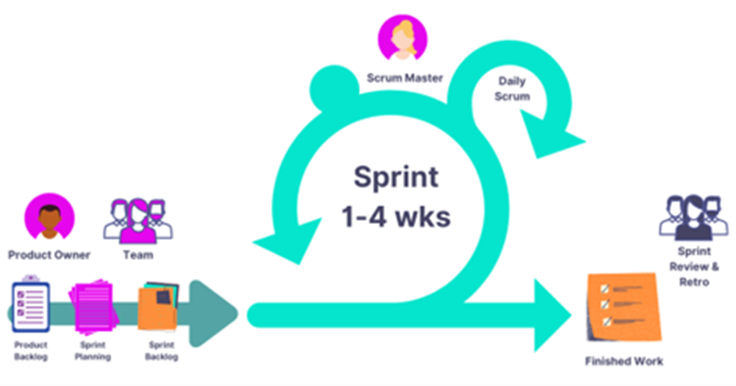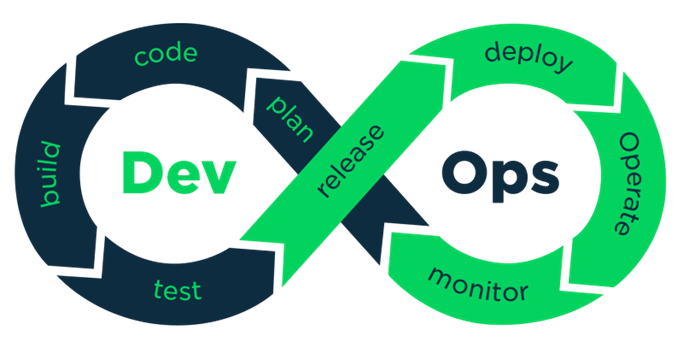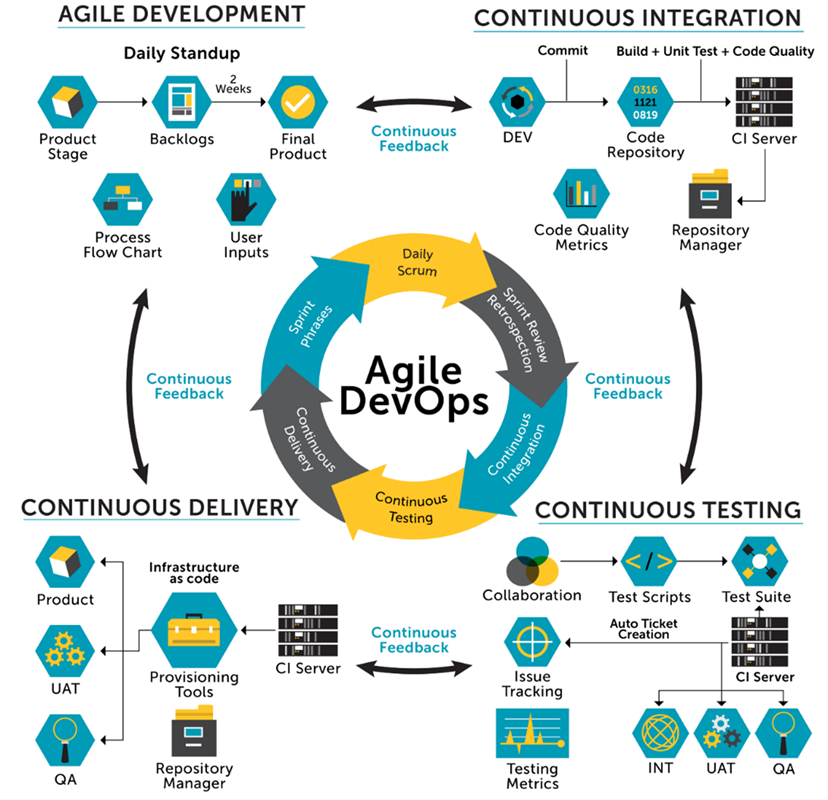Using Agile and DevOps to Compound Business Benefits: 1 + 1 > 2
Introduction
The rise of digitalization and Artificial Intelligence (AI) has created a great deal of confusion around Agile and DevOps. Some believe they are related and can be used as synonyms, and some wonder how they are related, while others want to understand their differences. Developers are even taking sides on which of these two might replace the other, which is again incorrect. Few people assume DevOps is better than Agile. But this is again a myth.
Hence, the actual problem is a lack of understanding due to limited knowledge. Agile and DevOps are not the same, and both need an organizational change of mindset as the first step of implementation.
In this blog, let’s deep-dive into both technologies to end the discussion of Agile Methodology vs DevOps.
The existing approach
As organizations and the market grew, so did the complexity and scale of technologies. This led to the need for scalability along with the blending of the principles of Agile and DevOps to cater to customer requirements and growing complexity and scale. This triggered multiple confusions about Agile and DevOps. To be precise, Agile and DevOps are related, but not the same. They work in sync and interoperate to meet complex customer demands and scale them efficiently.
Before deep diving into Agile and DevOps, let’s understand the development and operation phases. A software project starts with requirement gathering, solution design, development, testing, showing a demo to seek customer feedback, incorporating any suggested changes, and delivering the product. This is called the development phase.
Once the product is implemented, any issues reported during the post-production or operational monitoring stages are pushed back to the development team to be fixed. This is known as the operations phase.
In the traditional waterfall method, customer touch points existed only during requirement gathering and final delivery stages. Hence, deliverables were not sizable, and getting ready for deployment consumed significant time. Since the development and operations teams worked in silos, integration, coordination, and interoperability were substantial challenges during this approach. The lack of frequent customer feedback reduced product quality as the focus was more on process than requirement. Agile was created as the savior for the former and DevOps for the latter. So, while Agile and DevOps are related, they are different. They work in sync and are interoperable, but how does that happen? Let’s find out.
Exploring the synergies between Agile and DevOps
Agile Methodology is one of the approaches of project management where incremental development happens, i.e., the project is broken into phases, and the team emphasizes continuous collaborative improvement. Here, the customer is the key to a successful project, and their feedback is sought in every iteration or sprint so that the result is more satisfactory and valuable to the stakeholders.
Agile helps to produce value by driving the lean startup mindset, where learning by failing small and quickly is encouraged. At the end of every iteration, a potentially shippable Minimum Viable Product (MVP) is developed and deployed to the customer. This helps in understanding their requirements in a better way through feedback and improving product quality.

Image: A typical Agile project flow
DevOps, on the other hand, integrates development and operations. This involves a set of practices and tools that help bind the software development and IT Operations to improve the quality and speed of product deployment. The teams are cross-functional and multi-disciplinary in the product lifecycle, from development and testing to deployment and operations. Various tools are used to automate and accelerate processes, improving product reliability. DevOps cycle is an infinite loop of integration and development—Continuous Improvement (CI)/Continuous Development (CD). DevOps helps to deliver value by automating the delivery pipeline to make processes more reliable and quicker. It uses various tools like JIRA to create workflow, Jenkins to build and deploy, Selenium to run the tests, etc. Automation testing, especially for regression, checks for any new bugs, which reduces the time for fixing bugs and accelerates delivery.

Image: The CI-CD pipeline of DevOps
Agile produces value, and DevOps delivers value. So, what would be the result when they work together?
That’s when the Synergy Effect comes into the picture: 1 + 1 > 2, the interaction and cooperation of two agents produces a combined effect greater than the sum of their separate effects. DevOps and Agile complement each other to deliver fast, high-quality, and more reliable products. DevOps helps to reduce the friction between development and operations teams, which in turn reduces complications. Agile enables every team member to be equally responsible for the tasks as they are cross-skilled and self-managed. Both provide multiple benefits on implementation by increasing value and reducing risks, i.e., fewer bugs with faster fixes. The combination ensures a streamlined release process and optimized end product. Be it internally between the development and operations teams or externally with clients, the more the interactions, the fewer the complications and more satisfied customers.

Image: The Agile DevOps Process
Agile and DevOps are always better together because they empower teams to maintain a focus on the next release along with a long-term vision. This Agile DevOps process helps to optimize organizational structures, processes, and tools, which enables the sustainable flow of value stream.
Challenges
The primary challenge in implementing the Agile and DevOps process is the resistance to change at an organizational level. Employees accustomed to the existing way of working do not want to take time to learn, understand, and implement a new process. They consider it as a barrier to daily productivity, while it actually makes it easy to manage. A drastic cultural change is needed to implement this at each level, which consumes time. The next challenge is the lack of skills, which can be addressed by training the involved resources. The training includes a standardized infrastructure setup required for implementation. This provides a hands-on experience before the actual execution. Gradually, these challenges disappear when the benefits trickle in and improve the process, quality, and profits.
Conclusion
Agile and DevOps work together in synergy as Agile DevOps Process to minimize risk, reduce time to market, and improve product quality. The CI/CD principles play a vital role in identifying and analyzing the problems in earlier stages, helping in a smooth transition to production or changes in production. Automated Testing for greater code quality by overcoming regression bugs results in high-quality products. The principles of Refactoring and Design help in code reusability and modularity so that development can be easy and quick. Feedback between the development and Operations teams is as essential as customer feedback to ensure reliability on changes made and on time. While Agile controls the development Flow by reducing loss, fast adaption to changes/feedback, etc., DevOps controls the release flow by reducing the time to production with automation, quick fix for errors, etc.
Any methodology to improve the process or product quality will always complement one another. DevOps can never replace Agile and vice-versa. Hence, it is not Agile Methodology vs DevOps; it is the synergy effect of Agile and DevOps for a win-win situation for both customers and the organization. Together, they contribute to a mutually beneficial outcome for customers and organizations.
Latest Blogs
Core banking platforms like Temenos Transact, FIS® Systematics, Fiserv DNA, Thought Machine,…
We are at a turning point for healthcare. The complexity of healthcare systems, strict regulations,…
Clinical trials evaluate the efficacy and safety of a new drug before it comes into the market.…
Introduction In the upstream oil and gas industry, drilling each well is a high-cost, high-risk…




